best inking pens for comics
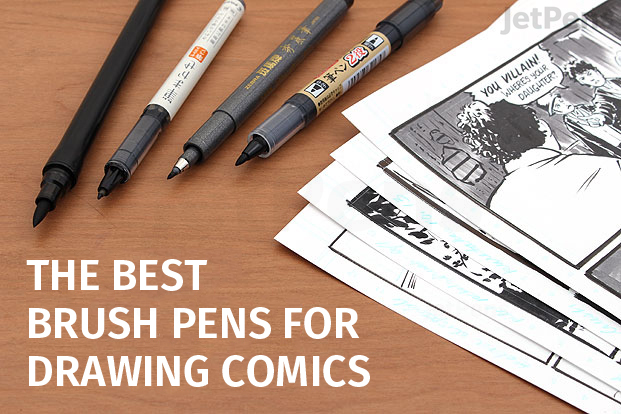
Sherlock Holmes would agree—there's nothing elementary about the way a brush pen is able to bring stories to life. Comic artists often rely on brush pens to convey expression and movement in a way that technical drawing pens cannot. Although it takes a certain amount of practice and dexterity to wield these tools, you don't have to be Picasso to appreciate their utility. Keep reading to find out what brush pens we enjoy using to draw comics.
Considerations
Tip Type
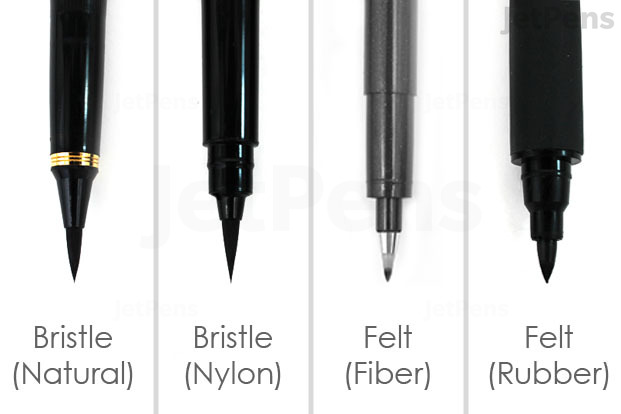
From left to right: natural bristle, synthetic bristle, fiber felt, and rubber felt tips.
There are two main categories of brush tips: felt and bristle. "Felt" tips are usually made of a synthetic fiber or rubber-like material formed into a single mass. Fiber tips can be either hard or soft and may fray over time as the fibers get worn. Rubber tips tend to be soft and sponge-y with a lot of flexibility and give. They maintain their shape well even after extended use.
Bristle tips mimic the feel of paint brushes as they are made up of individual synthetic or natural hairs. Some artists prefer the springiness of natural hair brushes, but synthetic bristles have come a long
way and are now comparable in feel and performance. Natural hair bristles require more upkeep than their synthetic counterparts, but can last a long time if well maintained.
Flexibility
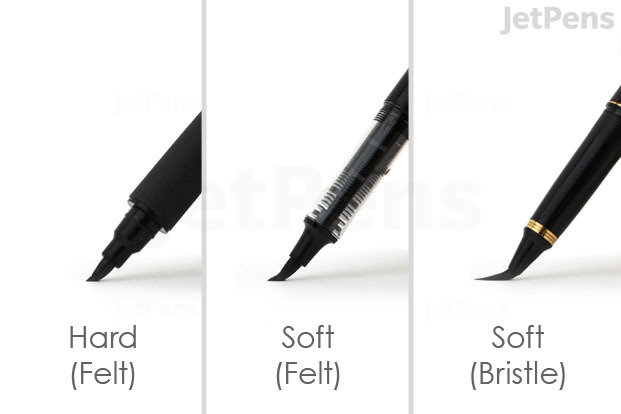
From left to right: hard felt tip, soft felt tip, and soft bristle tip.
Depending on comfort level, experience, and desired look, artists may choose either hard- or soft-tipped brushes. A soft, flexible tip will give an artist more line-width variation and expression, while a harder tip is ideal for crisp, clean lines. Hard tips also offer more control, making them more beginner friendly than soft tips.
Tip Size

From left to right: Fine, medium, and broad tips.
Brush tips vary in thickness from extra fine to broad. Thin brush pens are great for sketching or adding in details, while broad tips pack a bold punch in just one stroke and are excellent for inking and shading. Medium tips can be used for both sketching and shading, depending on an artist's preference.
Water- / Copic-proof

From top to bottom: waterproof, non-waterproof, Copic-proof, non-Copic-proof inks.
Artists who color in their work with water-based inks or Copic markers should choose brush pens that are water- and/or Copic-proof. This characteristic is not as important for those who scan in their work to be reproduced and colored digitally. Artists who enjoy softening up harsh edges with water may also consider using non-waterproof brush pens.
Hard Brush Recommendations
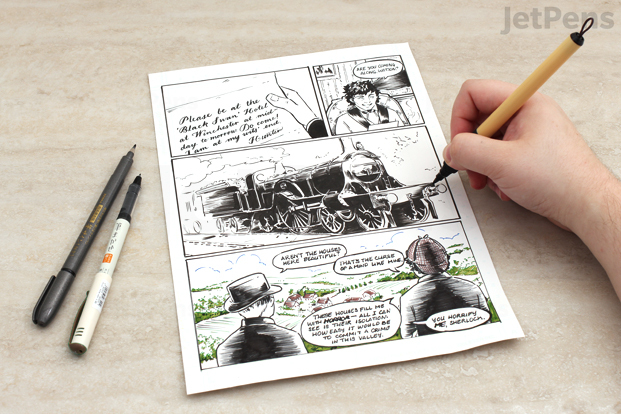
Drawing done with hard brush pens.
For a clean, uniform look, opt for hard brush pens. These brush pens are usually made from pressed fibers and are terrific for quick sketching, drawing man-made objects such as cityscapes and cars, and writing the lettering in speech bubbles. Unlike technical drawing pens, hard brush pens have some flexibility to them, allowing an art piece to look more lively and less flat.
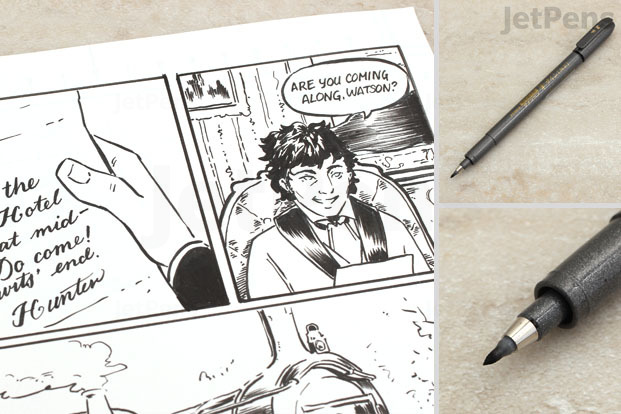
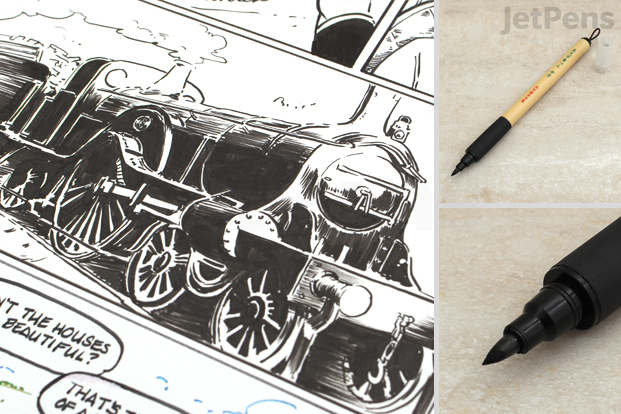
The Bimoji is available in a variety of tip sizes, including larger sizes like medium and broad. Although marketed for writing Chinese calligraphy, the Bimoji's hard felt tip is perfect for inking crisp, bold lines. It's also comfortable to use for long periods of time because of its cushioned grip.

While most comic artists do their work in black, sometimes a softer color like gray, brown, or blue is used to produce a subtler look. The Fude-makase comes in many more colors than that, giving artists ample choice in terms of color selection. Its sturdy, super-fine tip is also flexible, and the ink window to the side of the pen lets you see how much ink is left.
Soft Brush Recommendations
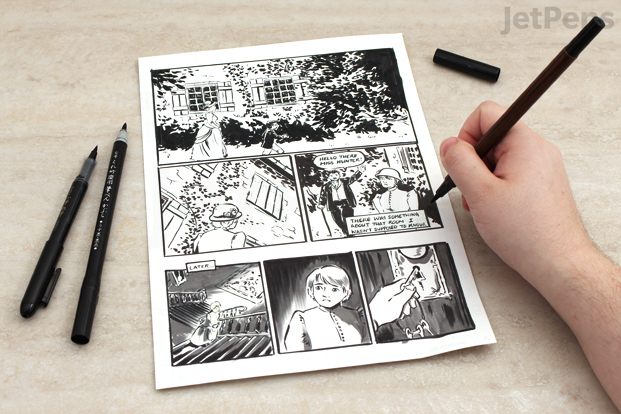
Drawing done with soft brush pens.
Due to their sponge-like tips, soft brushes offer greater range in line variation than hard brushes. Often made from a synthetic rubber material, they're used by comic artists to give a piece more depth and expression. These brush pens are great for shading and creating dynamic curves, but aren't as easy to use as the tips may be too malleable to control well.
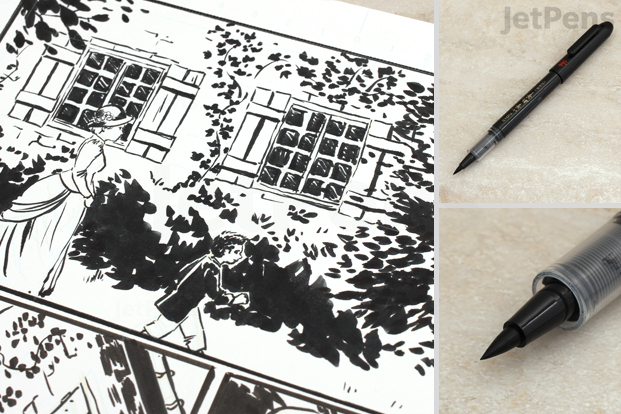
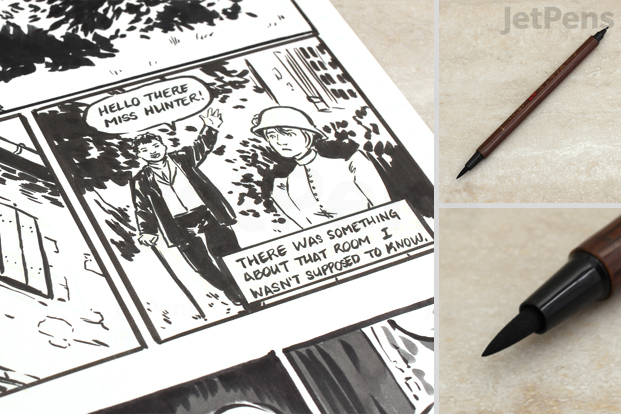
This double-sided brush pen gives you the best of both worlds with a hard, fine tip on one side and a soft, medium tip on the other. The soft tip is firmer than the Pilot Pocket Brush, making it much easier to control than most soft tip brush pens while still producing good line variation.
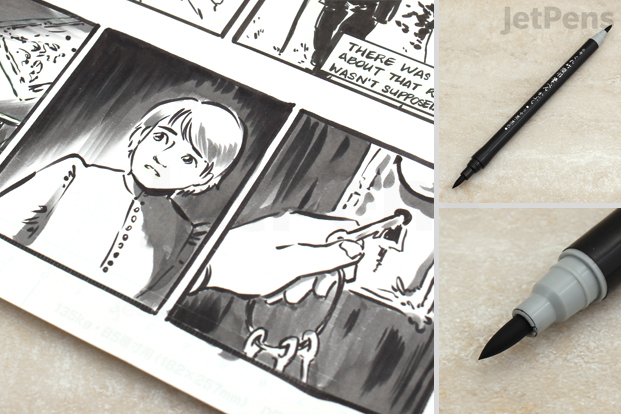
Although gray brushes were originally designed for condolence messages, comic artists can take advantage of their lighter ink to produce shadows or shade in comic spreads. The Kuretake No. 6 is double-sided, featuring a gray soft tip on one side and a black soft tip on the other. You can get a nice fadeaway effect with both tips by using more pressure at the beginning of a stroke and lifting the brush up towards the end.
Bristle Brush Recommendations
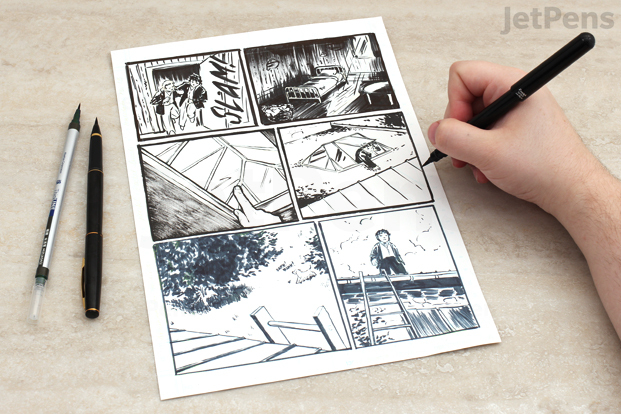
Drawing done with bristle brush pens.
Artists love bristle brush pens for their responsiveness and versatility, but they take a certain amount of practice and control to be used effectively. They're made to mimic actual paint brushes and can be used to create a variety of effects. One popular effect is a dry brush look that's excellent for replicating the textures present in nature or landscapes, such as smoke or tree bark.
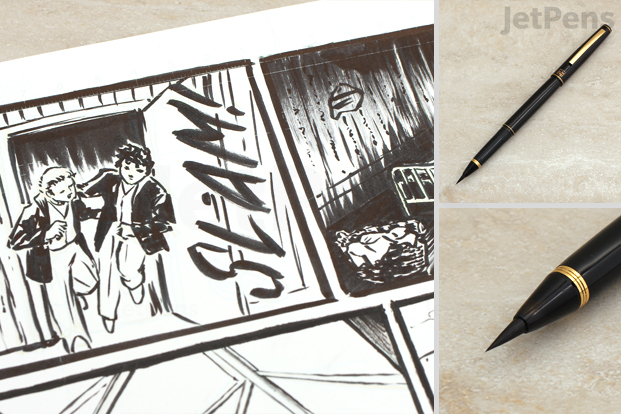
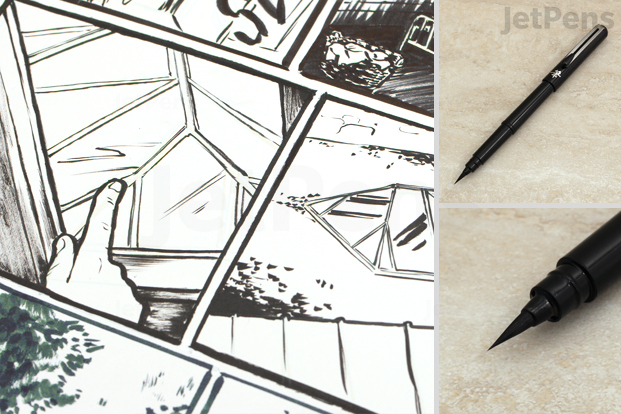
The Pentel Pocket brush is similar to the Kuretake no. 13, but more affordable and water- and Copic-proof. Like the no. 13, it paints extremely fine lines—perfect for doing detailed work. However, the ink is not as black as the ink in the no. 13 which may be a deal breaker for some artists.
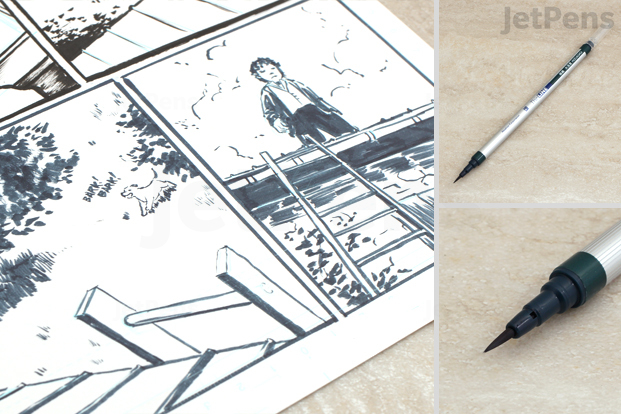
The Akashiya Sai ThinLine brush pens feature beautiful earthy colors that are wonderful for painting nature and landscapes. The tip is quite thin, so it's not the best for large scale coloring. We recommend using it to draw or accent nature such as trees, rivers, rocks, and more.
In Practice
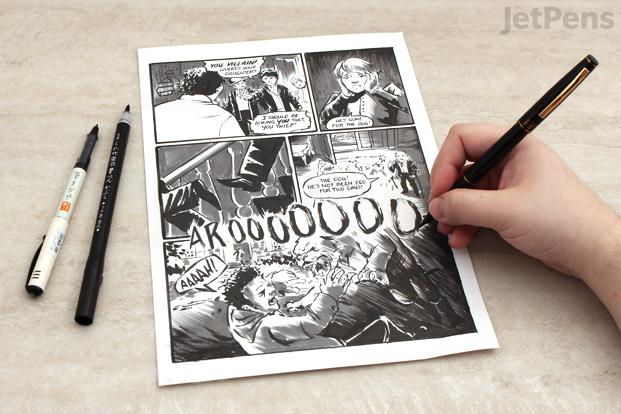
Drawing done with all types of brush pens.
Few artists would limit themselves to just one type of brush pen. Our resident artist created the above spread using a hard brush pen for the lettering, man-made objects such as doors, and the outlines of each panel. A bristle brush pen was used to capture the expression and movement of the people, and a soft brush was used to shade and color in shadows.
See the whole story below:

Sherlock Holmes and the Copper Beeches
Final Stroke
Brush pens are some of our favorite tools not only for drawing comics, but for calligraphy and other art as well. Be sure to check out our other blog posts on brush pens for calligraphy and brush pens for art. Do you have a favorite brush pen? Let us know in the comments below!
Shop This Post

Still not sure what to try? Check out our Brush Pen Samplers for some of our favorite and most popular brush pens. These sampler sets are great for anyone looking to get into brush pens, or for those who already love brush pens and want to try more!
best inking pens for comics
Source: https://www.jetpens.com/blog/the-best-brush-pens-for-drawing-comics/pt/879
Posted by: jaramilloicia1942.blogspot.com

0 Response to "best inking pens for comics"
Post a Comment